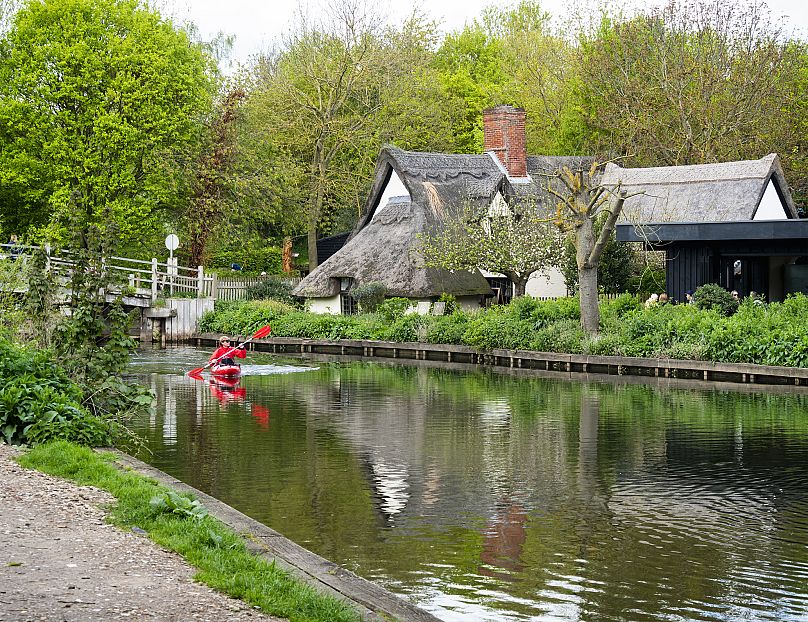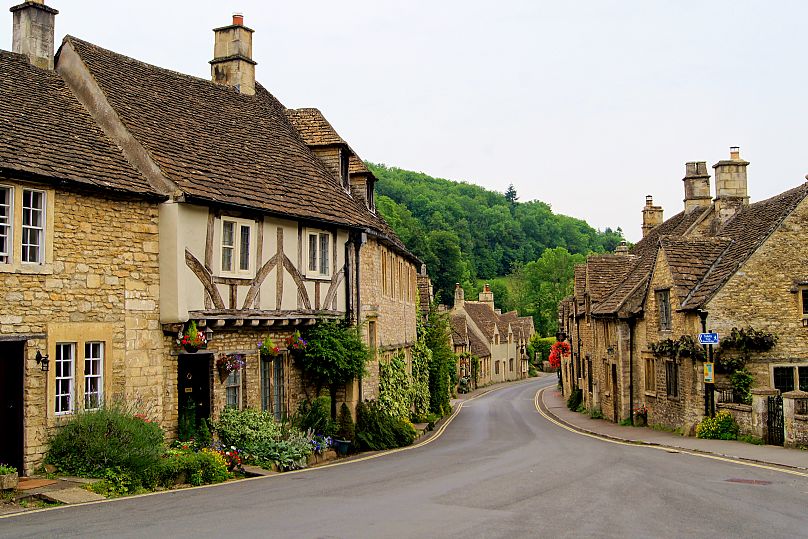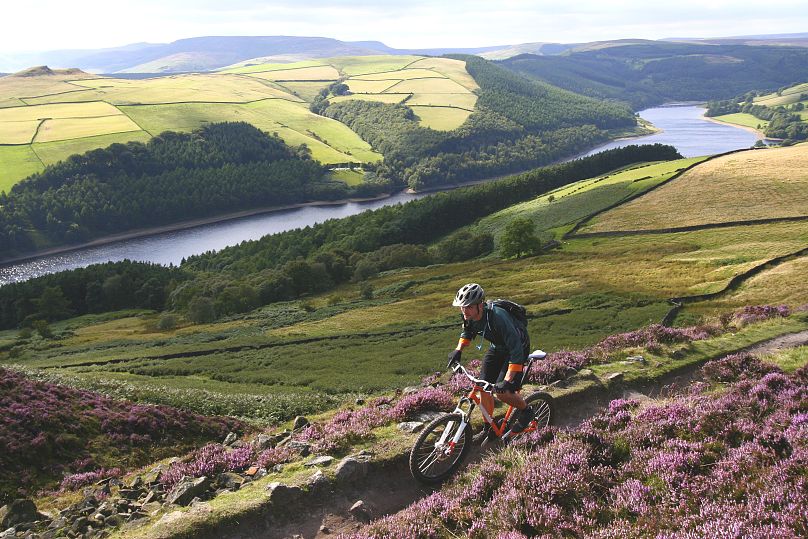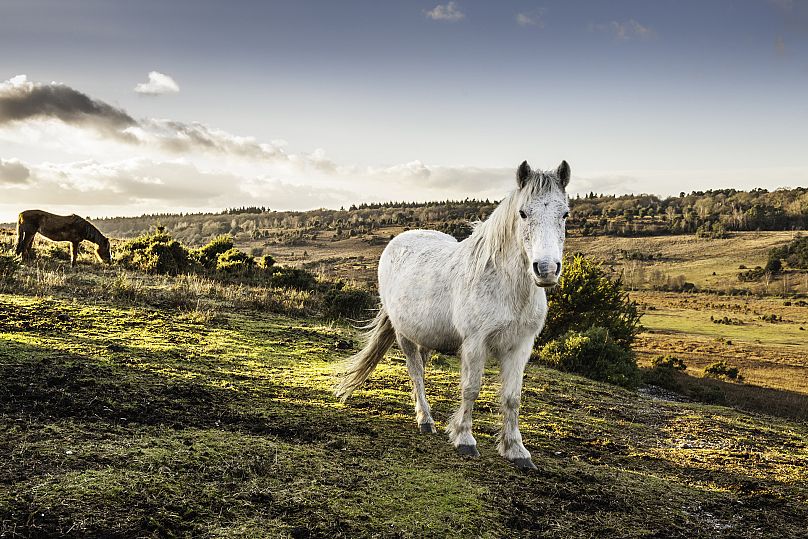From kayaking to climbing near London, these outdoor adventures in Suffolk, Essex and beyond will have you enjoying nature in no time.
With more of us looking for open green spaces to spend a socially-distant weekend, it’s of little surprise that the UK’s 15 national parks are seeing a boom this 2020. Fortunately, with the New Forest to the south and the Peak District to the north, London is never too far from Britain’s great outdoors.
Whether you’re looking for an adrenaline-fuelled escape kayaking ancient waterways or just need to swap the bright city lights for rolling green hills, these five-weekend getaways from London offer fairytale villages, wind-swept coastal hikes, and enough home-brewed ale and farmhouse cheese to keep you fuelled for a lifetime of adventure.
Stour Valley
Tracing almost the entire county border between Suffolk and Essex is the River Stour, one of England’s oldest trading waterways and the subject of John Constable’s most famous paintings.
The calm, willow tree-lined river flows past dozens of quaint English villages most famous for their thatched-roofed Tudor mansions, medieval churches, and miles of rolling green hills dotted with grazing cows.
Around 40km of the 72km River Stour is navigable by kayak, canoe and SUP, or you can explore the valley by foot on one of the numerous self-guided trails, including the 96km-long Stour Valley Path.
In the evening, bed down in a luxury riverside cottage or feast on refined British cuisine such as fillet of beef served in a Madeira jus and battered cod with samphire and smoked salmon foam.

Getting there: Trains from London Liverpool Street to Colchester take one hour. From Colchester station, it’s a 30-minute drive to the Dedham Vale Area.
The Cotswolds
An Area of Outstanding Natural Beauty since 1966, the Cotswolds is 800 square miles of thatched 16th-century houses, honey-coloured stone walls, and rolling green farmland.
The region, which spans across the English counties of Gloucestershire, Oxfordshire, Warwickshire, Wiltshire and Worcestershire, has more than 3,000 miles of pubic bridleways and ancient woodland to explore, making it the perfect place to go hiking, biking or horse riding.
The Cotswolds is also at the heart of British produce, with locally-produced cheeses, meats, spirits and ales available at weekly farmers markets and specialist farm shops, as well as served in old inns, gastro pubs and fine dining restaurants.
As for accommodation, choose from luxury manor house rentals and boutique bed and breakfasts, or pitch up a tent at one of the Cotswolds’ many campsites.

Getting there: Trains from London Paddington and London Marylebone to the Cotswolds take around 1 hour and 30 minutes.
The Norfolk Broads
With more than 200km of navigable waterways, the Broads National Park - originally dug out in medieval times to provide peat for fuel, but later flooded in the 14th century - is the perfect place to put your boating skills to the test.
Hire a self-drive motorboat for the day, or take a sailing lesson aboard one of the eight remaining 17th century-style Norfolk wherries.
If paddling is more your style, bring a kayak, canoe or SUP and follow one of the National Park’s paddle trail maps that lead through the pretty market towns and riverside pubs of Norwich, Geldeston and Bungay.
Hiking and biking trails, including the 98km Weavers' Way, are another great way to explore the wetlands.

Getting there: Trains departing from London Liverpool Street to Norwich can take up to 1 hour 50 minutes (faster trains take 1 hour 30 minutes).
The New Forest
Just a 90-minute train journey from central London is the New Forest, an ancient wood and heathland where wild horses, deer, wolves, wildcats and giant otters roam free amongst purple wildflowers and 500-year-old oak trees.
It was first named a royal hunting preserve by William the Conqueror in 1079, but today this beautiful wildland - now a protected National Park that covers parts of Hampshire, Wiltshire and Dorset - is reserved for cycling, horse riding, and windswept coastal walking.
The surrounding cobblestoned villages offer tea rooms, traditional country pubs, farmers markets, and craft breweries, while the Forest proper is a haven for bird-watching, wild mushroom hunting, and treehouse sleeping.

Getting there: Trains from London Waterloo to the New Forest’s nine stations take around 90 minutes.
Peak District
Founded in 1951, the Peak District is England’s oldest National Park. Adventurers looking for challenging hikes to mist-shrouded peaks head for the park’s Black Peak in the north, where Kinder Scout - the Peak District’s highest plateau and best viewpoint - awaits.
Further south, White Peak is crisscrossed with flatter, greener walking trails that pass through stone villages, flower-filled valleys, and glass-like lakes. The Peak District is most famous for its hiking and biking, but rock climbing, caving, and ziplining are popular outdoor activities here too.
After a day spent hiking in the moorlands or crawling through limestone caves, the nearby spa town of Buxton offers the perfect antidote to a packed day of adventure.
Getting there: Trains from London St Pancras to the Peak District take two and a half hours.















